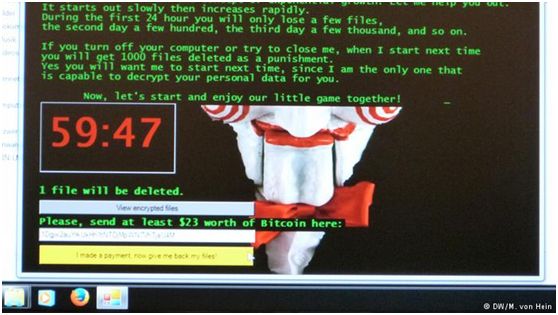Everything you need to know about Ransomware Viruses

The first infections with Ransomware software became known in 2013, since then there have been more and more reported cases. Today, they are one of the most common threats online, threatening Internet users and organizations of all sizes.
According to the Verizon 2019 Data Breach Investigations Report, Ransomware was the leading type of malware in 2018.
Infestation with Ransomware usually results in an encryption of the data stored on the affected computer system.
However, certain types of Ransomware block access to the data without encrypting it – or even put it online so everyone can see it.
Then the hackers demand a ransom to put everything back in its original state and return the stolen data to the victim. Mostly, the transaction takes place via Bitcoin, through wire transfers or text messages at premium prices, to protect the anonymity of the attackers and make the payment difficult to track. The ransom amount usually varies from $ 150 to $ 2,000 for individuals to thousands of dollars for an organization. The Worst Aspect of Ransomware: A paid ransom does not guarantee that the blocked data will be unlocked by the attackers.
There are several major risks when a PC is infected with Ransomware. Here are some scenarios:
1. Loss of precious data – like the pictures from your last holiday or other private events
2. Loss of financial / important data – such as your job-related stuff, student essays and projects etc.
3. Identity Theft – Someone could use your photos and personal information to pretend to be you (online or in real life).
4. Theft of Money – Paypal account, bank account, email account etc. Attackers could lock you out of your entire online identity – Facebook, Instagram, Twitter, Email.
5. Exposing your deepest secrets, such as a personal diary or sensitive photos you do not want to show. This nightmare has happened to quite a few celebrities.
Basically, Ransomware causes the data on your PC to be locked and encrypted until the ransom is paid. Usually through complex solutions like Bitcoin. And while these data are locked, they can also be used by the cyber criminal against you.
Most types of antivirus software can prevent Ransomware attacks and phishing attempts.
You need to understand one thing: even if all your private photos and data are stored in a so-called secure cloud such as Amazon, Google Drive, Dropbox or iCloud, and your PC does not have antivirus software, YOU ARE NOT SAFE!
These famous people have been exposed and hacked via phishing attacks that used fake websites. Again, even the simplest antivirus software on the market could have prevented these types of attacks!
If you do not have an antivirus software installed, protect your privacy and data now!
According to the Verizon 2019 Data Breach Investigations Report, Ransomware was the leading type of malware in 2018.
What is Ransomware and how does it work?
Infestation with Ransomware usually results in an encryption of the data stored on the affected computer system.
However, certain types of Ransomware block access to the data without encrypting it – or even put it online so everyone can see it.
Then the hackers demand a ransom to put everything back in its original state and return the stolen data to the victim. Mostly, the transaction takes place via Bitcoin, through wire transfers or text messages at premium prices, to protect the anonymity of the attackers and make the payment difficult to track. The ransom amount usually varies from $ 150 to $ 2,000 for individuals to thousands of dollars for an organization. The Worst Aspect of Ransomware: A paid ransom does not guarantee that the blocked data will be unlocked by the attackers.
What Ransomware viruses can do
There are several major risks when a PC is infected with Ransomware. Here are some scenarios:
1. Loss of precious data – like the pictures from your last holiday or other private events
2. Loss of financial / important data – such as your job-related stuff, student essays and projects etc.
3. Identity Theft – Someone could use your photos and personal information to pretend to be you (online or in real life).
4. Theft of Money – Paypal account, bank account, email account etc. Attackers could lock you out of your entire online identity – Facebook, Instagram, Twitter, Email.
5. Exposing your deepest secrets, such as a personal diary or sensitive photos you do not want to show. This nightmare has happened to quite a few celebrities.
Basically, Ransomware causes the data on your PC to be locked and encrypted until the ransom is paid. Usually through complex solutions like Bitcoin. And while these data are locked, they can also be used by the cyber criminal against you.
How do I protect myself from getting held to ransom?
Most types of antivirus software can prevent Ransomware attacks and phishing attempts.
You need to understand one thing: even if all your private photos and data are stored in a so-called secure cloud such as Amazon, Google Drive, Dropbox or iCloud, and your PC does not have antivirus software, YOU ARE NOT SAFE!
These famous people have been exposed and hacked via phishing attacks that used fake websites. Again, even the simplest antivirus software on the market could have prevented these types of attacks!
If you do not have an antivirus software installed, protect your privacy and data now!


